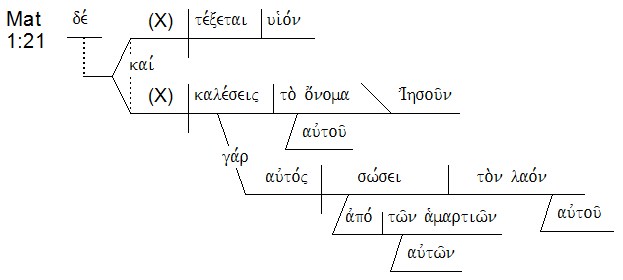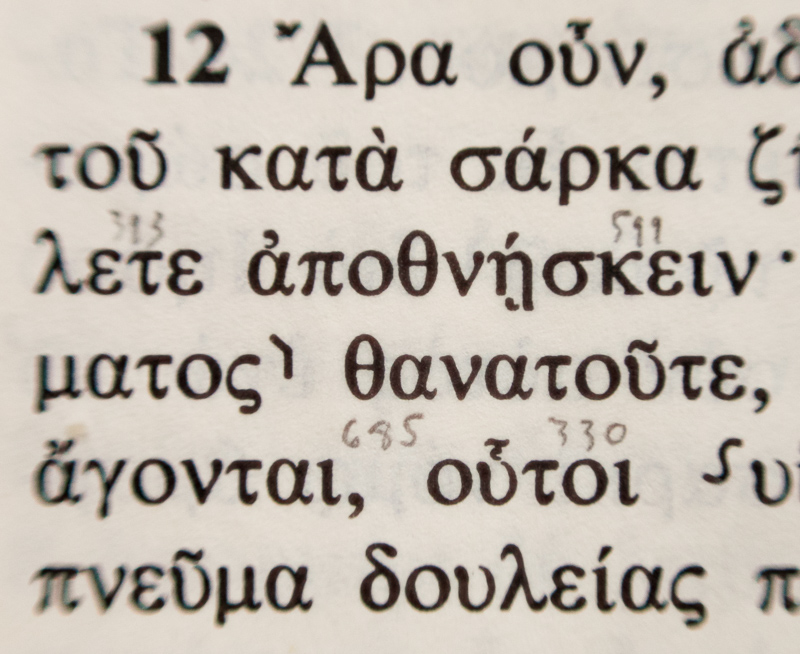By Donald C. McIntyre See also Part 1 and Part 2. A Case Study in Matthew 2:1–12 There are forty-seven verbal forms in this pericope; all but 10 verbal forms are perfective aspect. Of those ten forms that are not perfective, one is stative, two are...
by Donald C. McIntyre Verbal Aspect is Critical to an Accurate Apprehension of the Text Verbal aspect theory arose to prominence in 1989 and 1990 with the simultaneous work of Stanley Porter and Buist Fanning, who both sought to show how linguistics...
To do a Greek sentence diagram correctly, it takes having the right knowledge and tools. Here are a few thoughts on sentence diagramming.
by Christoph Heilig* Introduction Two weeks ago, Tavis Bohlinger wrote a blogpost in which he encouraged students and scholars of the New Testament to focus on the “common dialect,” ἡ κοινὴ διάλεκτος of the Greek language—that is, the Greek spoken...
by Vinh T. Nguyen In his recent post Four Reasons to Master Koine (and to Leave Attic Alone), Tavis Bohlinger made a plea to specifically focus on Koine in order to master “this particular type of Greek as thoroughly as possible.” This post...
Learning to read Koine (or biblical) Greek is essential, if you are training for church ministry, an academically focused career in biblical studies, or simply as a means to reading the New Testament in its original language. Even while I was in...
by Tavis Bohlinger* Yesterday we celebrated International LXX Day by publishing an essay on The Origin of the LXX. Today we are pleased to present the second half of that essay, because, well, we just love the Septuagint here at Logos (this proves...






